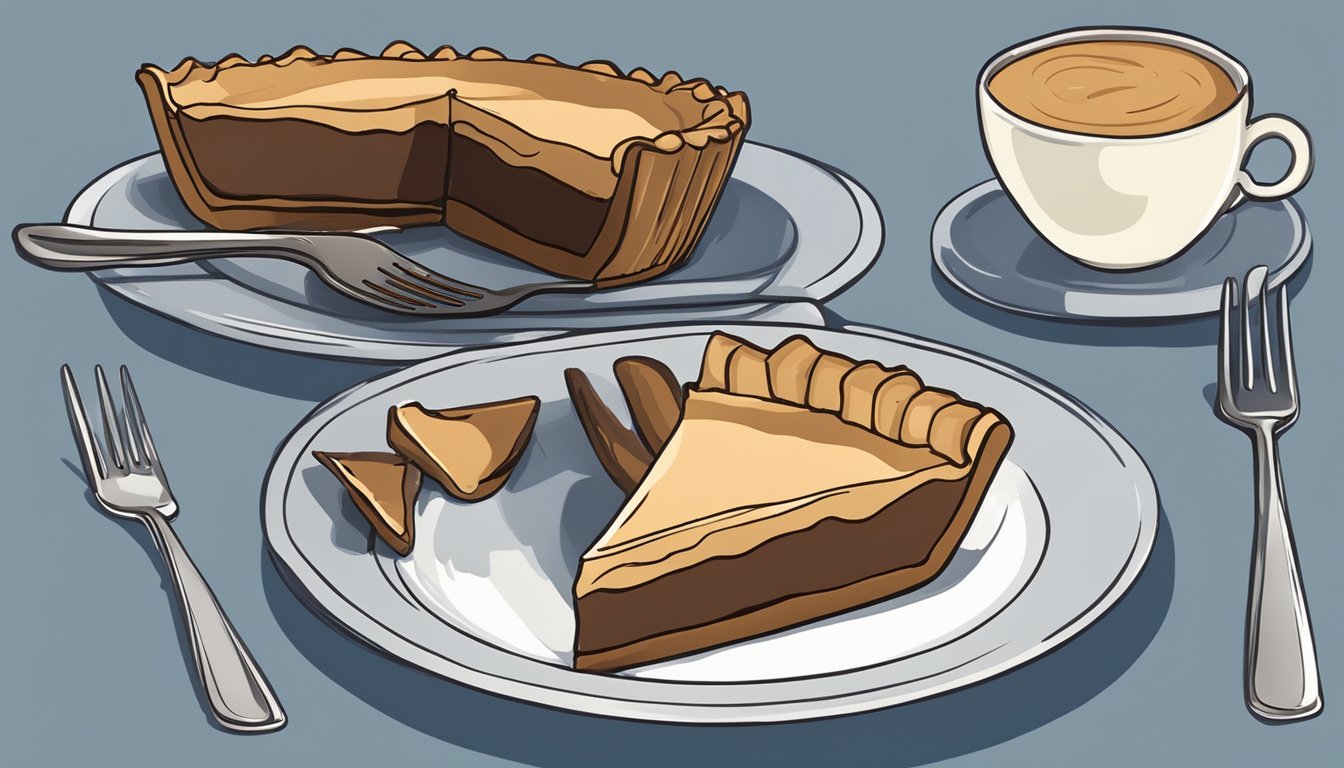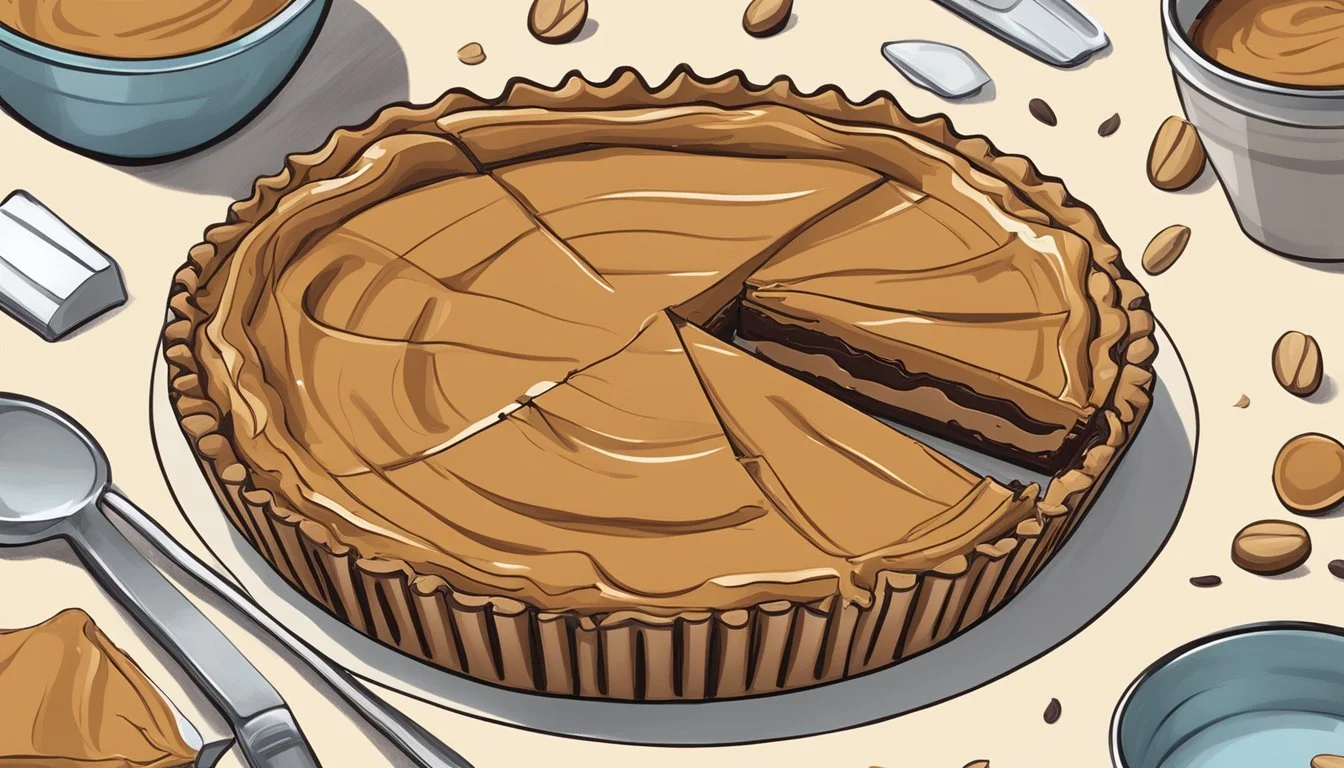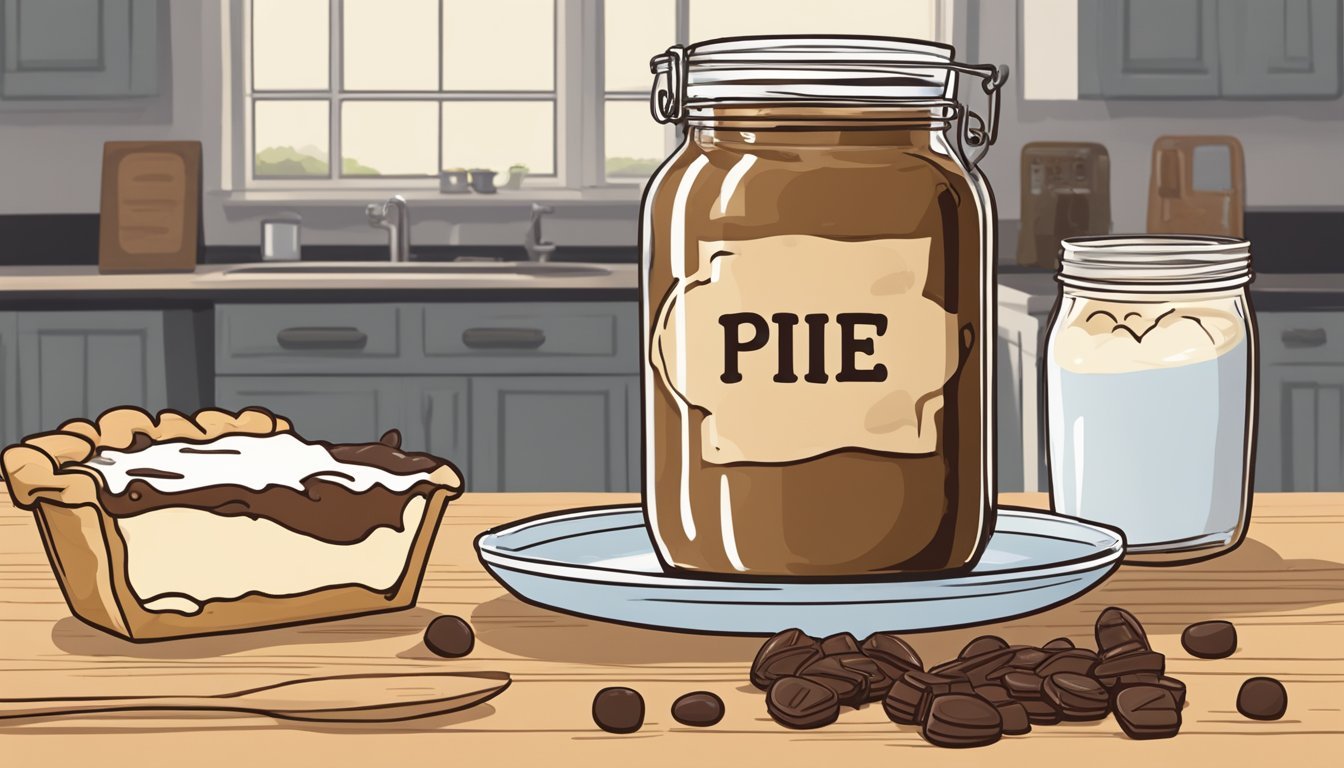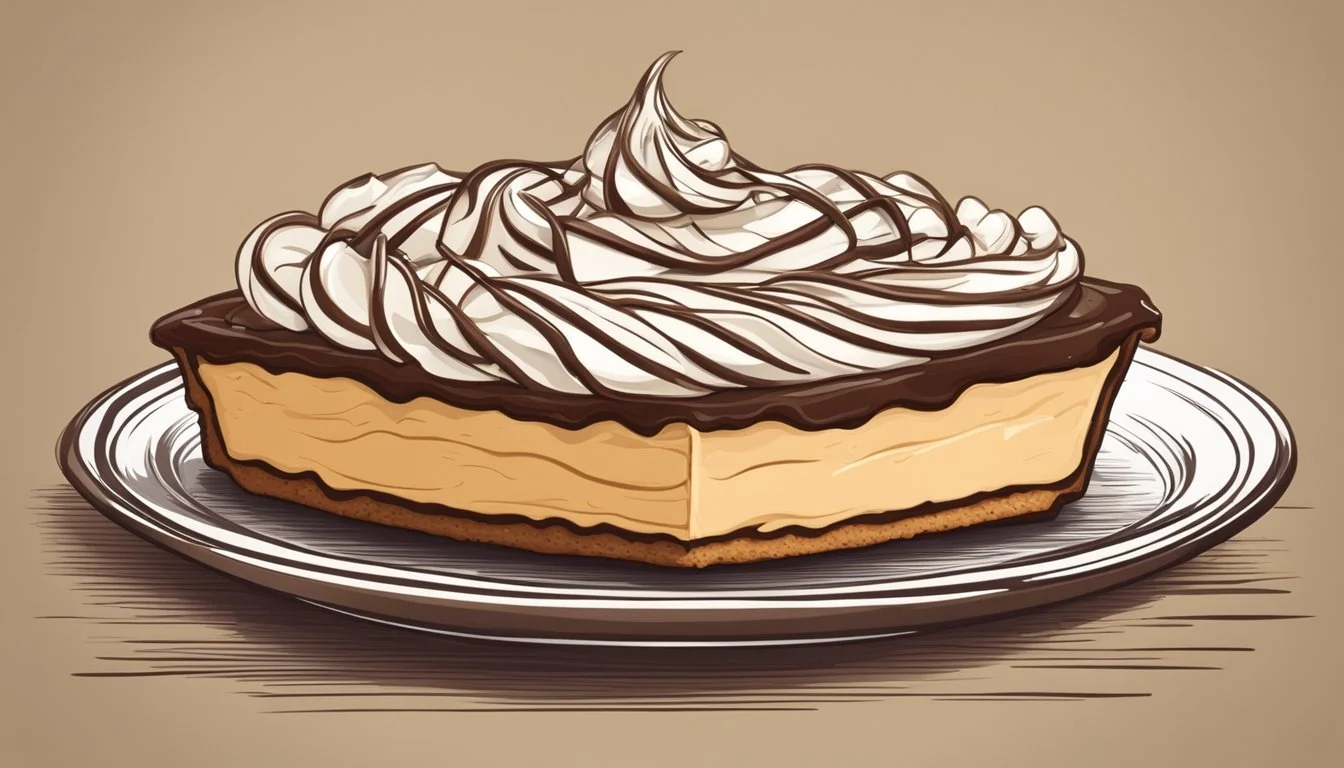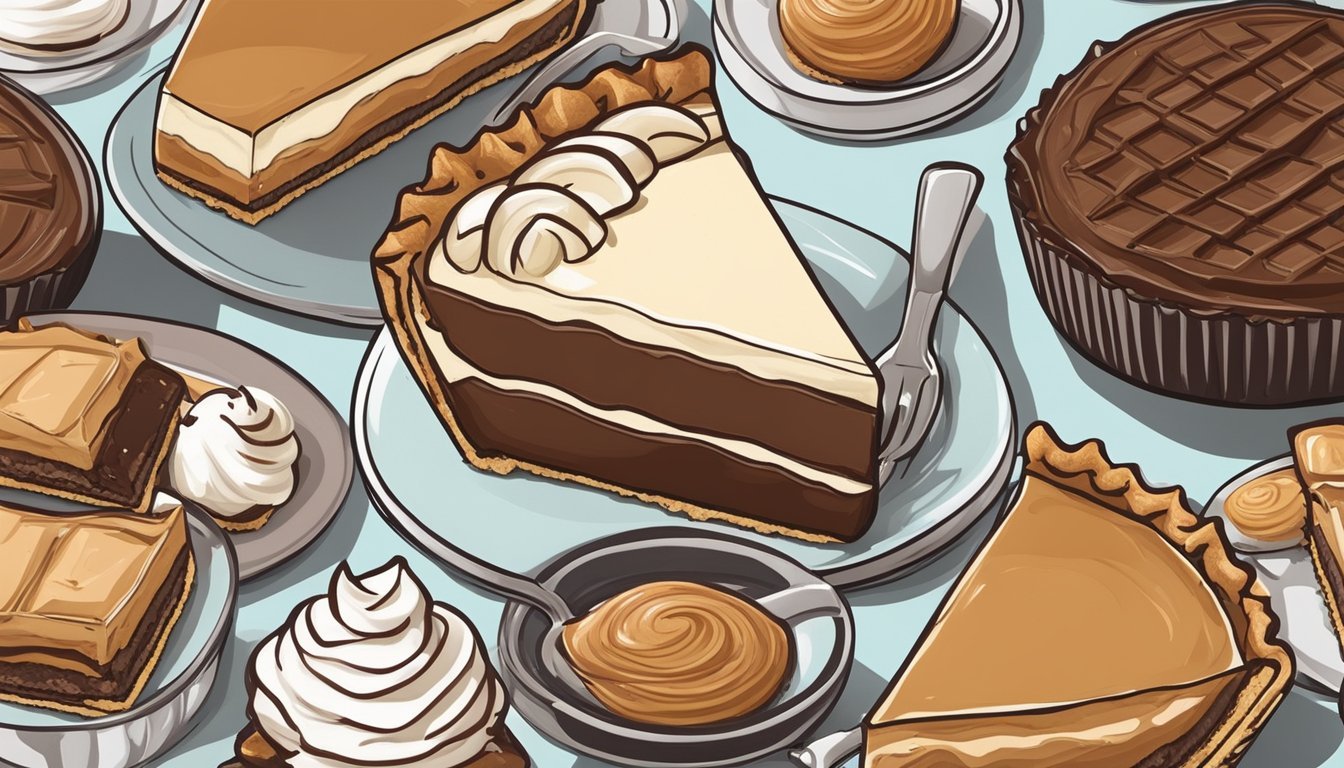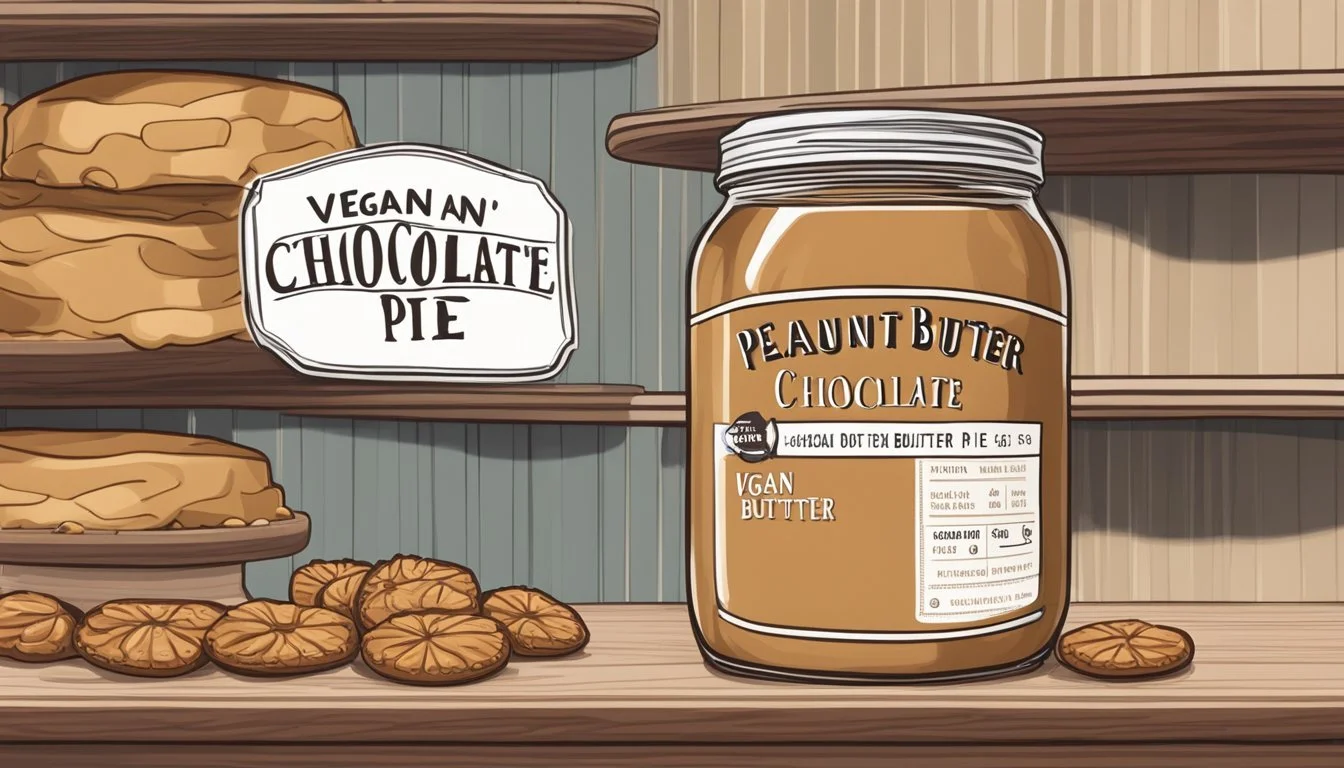Is Peanut Butter Chocolate Pie Vegan?
Unveiling the Ingredients and Variations
Peanut butter chocolate (What wine goes well with chocolate?) pie is a decadent dessert that traditionally melds the rich flavors of chocolate and peanut butter in a satisfyingly sweet and creamy filling. Often, this dessert is thought of as off-limits for those adhering to a vegan diet due to the presence of ingredients such as butter, milk, and sometimes eggs. However, with the rise of veganism and the increasing demand for plant-based alternatives, vegan versions of this classic treat have been successfully created.
Vegan peanut butter chocolate pie substitutes the non-vegan components with plant-based alternatives without compromising on taste or texture. The crust can be made using crushed vegan-friendly cookies and plant-based butter, while the filling utilizes dairy-free chocolate, vegan butter, and occasionally, silken tofu or coconut cream for the desired creamy consistency. The result is an indulgent pie that is both accessible to vegans and appealing to anyone looking to explore dairy-free desserts.
It is important for consumers to be aware that not all peanut butter chocolate pies are vegan, as some may still contain animal-derived ingredients. Careful reading of labels or direct inquiries with the manufacturer can confirm the vegan status of a commercially made pie. For those opting to make the dessert at home, a plethora of recipes are readily available that specifically cater to a vegan diet, ensuring that everyone can enjoy a slice of peanut butter chocolate pie that aligns with their dietary preferences.
What Makes a Dessert Vegan?
In a vegan dessert, all ingredients must be sourced from non-animal origins, ensuring they are dairy-free and egg-free. Attention to detail is crucial to meet vegan standards.
Understanding Vegan Ingredients
Vegan desserts rely on plant-based ingredients. These typically include:
Fruits and vegetables: Provide natural sweetness and moisture.
Nuts and seeds: Offer fats and a creamy texture, often substituting for dairy.
Plant-based milks: Such as almond, soy, or coconut milk replace cow's milk.
Vegan sweeteners: Agave syrup, maple syrup, or cane sugar not processed with bone char.
Vegan chocolate: Made without dairy ingredients, using alternatives like cocoa butter and plant-based milks.
Common Non-Vegan Ingredients to Avoid
Certain ingredients are commonly found in desserts but are not vegan-friendly. These include:
Dairy: Milk, butter, cream, and certain chocolate types containing milk derivatives.
Eggs: Often used for binding or leavening in traditional baking.
Gelatin: An animal byproduct, used as a setting agent in various desserts.
Honey: An animal-derived sweetener, though some debate its vegan status.
Refined white sugar: Some is processed with animal bone char, thus not vegan.
To confirm a dessert is vegan, one must meticulously check every ingredient against these criteria.
Deconstructing Peanut Butter Chocolate Pie
When examining a peanut butter chocolate pie, attention centers on the harmonious blend of peanut butter, chocolate, and a supportive crust. Each component plays a pivotal role in creating the distinctive taste and texture that defines this dessert.
Peanut Butter's Role
Peanut butter serves as the primary flavor enhancer in the pie. Its creamy consistency allows for easy mixing with other ingredients to form a smooth filling. High-quality peanut butter contributes a richness and depth of flavor that is essential to the pie's overall character.
Chocolate's Contribution
Chocolate adds a luxurious and indulgent element, whether used as a layer or integrated into the peanut butter filling. Chocolate can be melted and blended to ensure a uniform chocolate flavor throughout the piece or added as a topping for textural contrast and visual appeal.
Types of Chocolate Used:
Dark Chocolate: Intense, less sweet, potentially vegan.
Milk Chocolate: Creamier, sweeter, not typically vegan.
Vegan Chocolate Chips: Dairy-free alternative.
The Importance of the Pie Base
A sturdy base is crucial as it holds the pie together and offers a textural counterpoint to the creamy filling. The base can range from a simple graham cracker crust to an Oreo cookie crust.
Common Pie Bases:
Graham Cracker Crust: Classic, sweet, and crumbly.
Oreo Cookie Crust: Chocolatey with hints of vanilla from the cookie filling.
Almond Oat Crust: A nutritious, gluten-free option that adds a subtle nutty flavor.
These bases can be baked for a firmer texture or chilled for a no-bake version of the pie. The choice of crust contributes to the pie's overall experience, complementing the filling without overshadowing the starring flavors of peanut butter and chocolate.
Choosing the Right Ingredients
Creating a vegan peanut butter chocolate pie requires careful selection of plant-based ingredients. Ideal choices should not only align with vegan principles but also contribute to the deliciousness of the final dessert.
Selecting the Best Peanut Butter
When choosing peanut butter, look for natural peanut butter that lists only peanuts and salt, avoiding those with added oils or sugars. For a more nuanced flavor, one could also consider using almond butter, which offers a similar texture with a distinct taste.
Opting for Vegan Chocolate
Vegan chocolate is pivotal in achieving the classic taste without animal derivatives. Stick to vegan chocolate or dark chocolate brands that certify no dairy inclusion. For the cocoa component, ensure the cocoa powder is pure and free from dairy or additives.
Healthy Alternatives for Traditional Ingredients
Instead of typical dairy, eggs, and refined sugars, innovatively use tofu for creaminess, plant milks such as almond milk, and natural sweeteners like maple syrup. Incorporate these healthier alternatives seamlessly to maintain the pie's rich flavor while keeping it vegan.
By attentively choosing ingredients, one can craft an exquisite vegan chocolate peanut butter pie that is both indulgent and aligned with vegan dietary choices.
Creating the Perfect Pie Texture
When crafting a vegan chocolate peanut butter pie, the texture is paramount. An ideal pie boasts a creamy filling complemented by a firm crust to hold its shape.
Achieving a Creamy Filling
The secret to a lusciously creamy filling lies in the choice of ingredients. Coconut cream is a popular choice for vegan pies, as it provides a rich mouthfeel reminiscent of dairy-based creams. When chilled, coconut cream can be whipped to a mousse-like consistency, perfect for layering onto pie crusts.
For those preferring a protein-rich alternative, silken tofu or firm silken tofu can be blended until smooth to act as a base for the pie filling. Tofu not only contributes to the creamy texture but also adds a subtle structure to the filling, ensuring it doesn't collapse when sliced.
Selecting a Firm Pie Crust
A strong base is vital for a pie to support the creamy filling. The crust must be firm enough to hold up the weight of the filling, yet delicate enough to complement the texture without overpowering it. Here are common crust options for vegan pies:
Traditional Pie Crust: Pre-baking the crust until it’s golden allows it to firm up.
Cookie Crumb Crust: Freezing a crumb base, often made with vegan cookies and margarine or oil, can achieve the desired firmness and richness.
Raw Crusts: For a no-bake pie, nuts and dates can be pressed into a pan and frozen, creating a crust that is solid at serving temperature.
Choosing the right base and filling ingredients, and understanding how to manipulate them, is crucial in achieving the perfect vegan chocolate peanut butter pie texture.
Step by Step Recipe Instructions
The process of creating a vegan peanut butter chocolate pie involves three main phases—preparing the ingredients, assembling the layers, and allowing the pie to set. Each step below outlines the specific actions to be taken, ensuring that the recipe is easy to follow and that each component is processed correctly for optimal results.
Preparing the Ingredients
One starts by gathering all the necessary ingredients for the crust and filling. For the crust, they typically will need flour, cocoa powder, a sweetener like maple syrup, and oil. These ingredients are then blended in a food processor until a dough-like consistency is achieved. If the mixture is too crumbly, a small amount of oil can be added to achieve the desired texture.
For the filling, ingredients typically include vegan chocolate chips, peanut butter, a plant milk alternative, and in some recipes, tofu. These ingredients are either melted together, such as the vegan chocolate chips and peanut butter in the microwave or heated in a double boiler, and then transferred to a blender. They are blended until smooth, ensuring no lumps remain.
Assembling the Layers
Once the ingredients are prepared, the next steps involve constructing the pie. The crust mixture is pressed into the base of a parchment-lined pie dish or springform pan, making sure it’s evenly distributed along the bottom and sides. The pan is either preheated or set aside depending on if a baked or no-bake crust is desired.
The filling is then poured over the crust, smoothing out the top with a spatula for a flat surface. At this stage, additional elements such as flaked sea salt or extra peanut butter can be swirled into the top for added flavor and presentation.
Freezing and Setting the Pie
The final step in the recipe is to let the pie set. This is done by placing it into the refrigerator or freezer based on the recipe’s instructions. A pie typically requires several hours to set, with times varying from 2 hours in the freezer to 12-24 hours in the refrigerator. It’s important not to rush this step, as proper setting ensures the pie holds together when sliced.
One checks the pie for firmness by gently pressing on the surface before removing it from the refrigerator or freezer. Once set, the pie can be sliced and served immediately. If frozen, some recipes suggest letting it thaw for a few minutes to ease slicing.
Nutritional Profile of Vegan Peanut Butter Chocolate Pie
The nutritional value of a vegan peanut butter chocolate pie is essential for those monitoring their dietary intake. This profile will explore the caloric balance and the types of fats and sugars present in the dessert.
Caloric and Macronutrient Breakdown
A typical slice of vegan peanut butter chocolate pie contains a significant amount of calories, mainly due to its dense combination of fats and carbohydrates. Here is a simplified breakdown of the macronutrient content in an average serving:
Calories: Ranges from 200 to 400 kcal per slice
Carbohydrates: Approximately 30-50 grams, with a notable portion from sugars
Protein: Around 4-10 grams, variable based on the presence of nuts and type of vegan milk
Fats: Can vary widely, but generally between 10-20 grams, with a mix of saturated and unsaturated fats
Understanding Fats and Sugars
Fats and sugars contribute taste and texture to a vegan peanut butter chocolate pie, but considering their forms is important for health:
Saturated Fat: Typically lower than in non-vegan counterparts, due to the absence of butter and cream. However, coconut products often used can contain high levels.
Unsaturated Fat: Usually present from natural peanut butter and crust oils, contributing to the creamy consistency.
Sugars: Often high, from ingredients like maple syrup or cane sugar. It's essential to balance with nourishing meals throughout the day.
Fiber: Moderate amounts from whole grain flours or nut-based crusts.
Cholesterol: Generally nonexistent as vegan pies do not contain animal products.
Sodium: Minimal unless added in significant amounts in peanut butter or the pie crust.
Finishing Touches and Presentation
The final stage of crafting a vegan peanut butter chocolate pie involves thoughtful selection of toppings and strategic serving techniques to elevate both taste and visual appeal.
Selecting the Right Toppings
When selecting toppings for a vegan peanut butter chocolate pie, one should prioritize options that complement the rich flavors of the pie itself. Whipped cream alternatives, such as coconut whip, are popular choices for adding a light, airy texture. For a touch of fruity freshness, berries can be artfully arranged on top. Those with a penchant for extra indulgence might opt for a drizzle of chocolate sauce or a decadent ganache. To maintain the pie's integrity, it's recommended to use toppings just before serving to ensure they remain distinct and don't dampen the crust. Lastly, for a crunch that contrasts the creamy filling, crushed peanuts can be sprinkled over the pie, adding both flavor and a pleasing texture.
Serving and Decoration Tips
Serving a vegan peanut butter chocolate pie is as much about the presentation as it is about the taste. To begin, use a clean, sharp knife to cut slices, wiping the blade between cuts to ensure crisp edges. Present each slice on individual plates for a personal touch. The pie can be garnished with an artistic drizzle of chocolate sauce or ganache, and a few berries or a dollop of coconut whip can be added for visual contrast and a burst of flavor. For a final touch of elegance, a light dusting of cocoa powder or powdered sugar over the slices can make them look as irresistible as they taste. Remember, the eye is drawn to symmetry and color, so arrange your toppings deliberately to create balance and visual interest on the plate.
No-Bake Methods and Techniques
When creating a vegan chocolate peanut butter pie, the no-bake method is a perfect approach for a simple and delicious dessert. This technique leverages the cooling power of the freezer and refrigerator to set the pie without the need for an oven.
Utilizing the Freezer and Fridge
The freezer and refrigerator play crucial roles in the no-bake pie process.
By using the freezer: A quick setting time can be achieved, often in as little as 45 minutes, but the texture might be firmer than desired if the pie is not allowed to thaw slightly before serving.
The refrigerator: Provides a gentler, slower setting process, typically over 2 hours or up to 24 hours for optimal firmness and flavor integration.
It is essential for no-bake desserts to be stored correctly to avoid any textural issues that can arise from excessive moisture or temperature variations.
Pie without Baking
No-bake pies rely on a blend of ingredients that firm up when chilled, eliminating the need for baking. A typical vegan chocolate peanut butter pie filling might include:
Melted chocolate
Peanut butter
Plant-based milk, such as almond milk
Sweeteners or flavor enhancers like cinnamon
The filling is combined until smooth, often using a blender or mixer, and then poured into a pre-prepared crust—made from crushed cookies or graham crackers mixed with vegan butter. Ensuring the filling is evenly distributed in the crust helps prevent air pockets and results in a more professional-looking dessert. After preparation, the pie is set in the refrigerator to achieve a creamy, sliceable consistency.
Vegan Dessert Variations
Vegan dessert variations offer an expansive palette of flavors and textures, with options for those with dietary restrictions such as gluten and nut allergies.
Exploring Flavors and Substitutions
Vegan desserts thrive on creativity, often utilizing alternative ingredients to replace traditional ones. An example is vegan peanut butter pie, which can embrace a variety of ingredients to cater to different palates. A classic pairing is chocolate and peanut butter, but chefs may also integrate other flavors, such as coconut, mint, or even citrus to provide a refreshing twist.
Crust options: Traditional flour can be replaced with almond flour or oat flour to change the flavor profile.
Sweeteners: Maple syrup is a popular choice for natural sweetness, while some may opt for agave syrup or date paste.
Creating Gluten-Free and Nut-Free Options
To appeal to those with food sensitivities, vegan desserts often incorporate gluten-free and nut-free substitutions without compromising on taste. Vegan peanut butter pies, specifically, can be adapted to meet these needs.
Gluten-Free: Using gluten-free oats or a blend of gluten-free flours such as rice flour or sorghum flour for the crust ensures a safe option for those with gluten intolerance.
Nut-Free: For individuals with nut allergies, sunflower seed butter offers an excellent alternative to nut-based butters.
Milk Replacements: Instead of dairy, one can use almond milk or coconut milk in the pie filling for creaminess.
A thoughtful consideration of ingredients ensures that vegan desserts remain inclusive, allowing everyone to indulge in delightful treats.
Storage Instructions and Shelf Life
When it comes to storing a vegan peanut butter chocolate pie, ensuring that it maintains its flavor and texture is crucial. Appropriate storage not only extends the shelf life of the pie but also keeps it safe for consumption.
Proper Pie Storage Techniques
After preparing a vegan peanut butter chocolate pie, room temperature storage is typically suitable for a short period post-cooling, typically up to 2 hours. For longer preservation, the pie should be stored in an airtight container to prevent it from absorbing other flavors and moisture from the refrigerator. Slice leftovers can be wrapped individually for convenience. The pie or slices must then be refrigerated within this timeframe. Here are specific steps for refrigerating:
Allow the pie to cool completely after preparation.
Place the pie in an airtight container or wrap slices individually with cling film.
Refrigerate the covered pie at temperatures below 40°F (4°C).
Maintaining Freshness Over Time
The shelf life of a vegan peanut butter chocolate pie is generally 3-5 days when refrigerated properly. For longer storage, freezing the pie is an option and can extend its life up to 1 month. To freeze the pie:
Wrap the pie securely with a plastic wrap.
Overwrap with aluminum foil to protect from freezer burn and odor absorption.
Thaw overnight in the refrigerator before serving to ensure proper texture and taste.
Always check the pie for any signs of spoilage, such as an off aroma or visible mold, before consuming, regardless of being within the expected shelf life.

